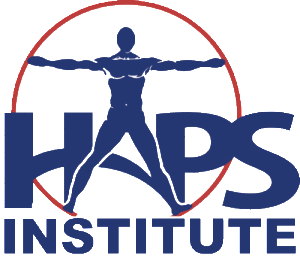Da Vinci in the flesh
May 2nd, 2019 marks 500 years since the death of one of the most famous artists to have ever lived. Although none of us have ever met the man - we are all familiar with his name. Whether you’ve visited the Louvre to see the Mona Lisa, or you’re a fan of the novel ‘The Da Vinci Code,’ we have all heard of Leonardo da Vinci in some shape or form. So how has a man with no social media accounts or political influence, left such a mark on society today?
Well - it's probably because Da Vinci had his fingers in A LOT of different pies. As an Italian polymath of the Renaissance (~1300 -1600), his interests covered a broad range of fields including art (drawing, painting and sculpting), anatomy, engineering, astronomy, mathematics, botany, writing, history AND cartography. Aside from dabbling in almost all aspects of human culture, he is probably most renowned for his remarkable artistic talent. From drawing portraits, to sketches of mechanical weapons and human bodies, he is undoubtedly one of the most famous and talented artists to have ever lived.
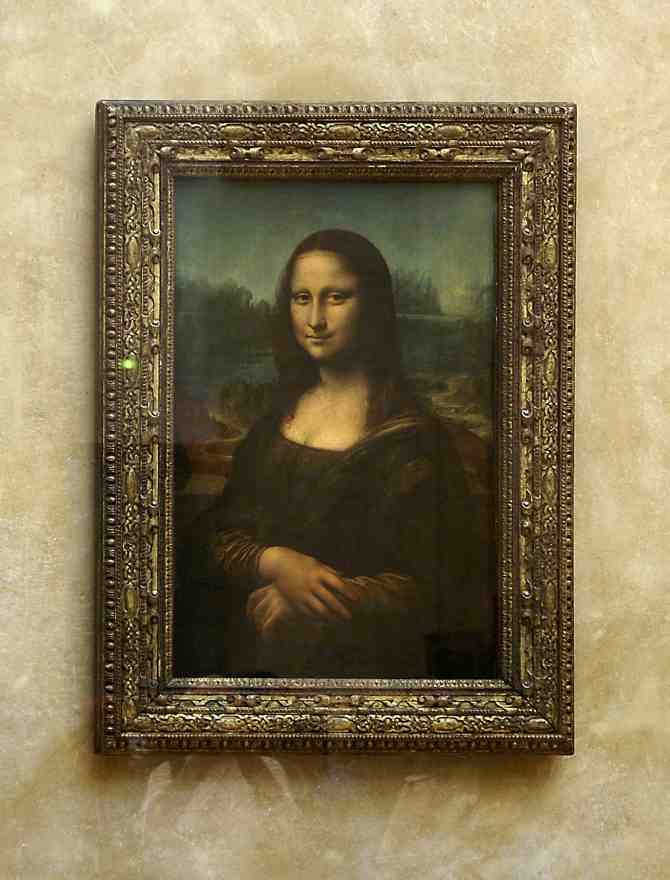
The Mona Lisa - Da Vinci's most famous portrait, located in the Louvre.
A humble beginning
Born in the small town of Vinci in the Republic of Florence (1452), Leonardo was the son of the wealthy legal notary Messer Piero Fruosino di Antonio da Vinci and Catrina, a peasant. He spent the first 5 years of his life living with his mother, until he moved into the household of his father in early 1457. Despite his birth out of wedlock, his father managed to convince another famous artist at the time, Andrea del Verrocchio, that Leonardo had considerable artistic talent worth pursuing.
After joining the artistic world as an apprentice under Verrocchio at the age of 14, Leonardo very quickly proved himself as an adept drawer. He first gained notoriety for his work on The Baptism of Christ, eventually leading on to other famous scenes such as The Last Supper (featured below) and The Annunciation.
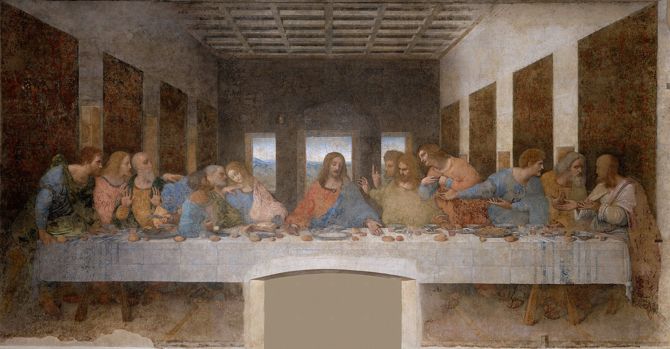
Verrocchio, as a teacher demanded that his students had an in depth knowledge of the human body in order to create lifelike paintings. Leonardo was fascinated by the human body as it embodied the epitome of a ‘perfectly functioning machine’. During his time under Verrocchio, Leonardo observed physicians through their dissections, mastering the art of topographic anatomy - drawing muscles, tendons and other visible anatomical features.
Artistic anatomy
As a continuation of his interest in the human body, Leonardo dissected over thirty human cadavers himself, exploring the intricate details of the anatomy of human beings. He generated hundreds of pages of anatomical sketches of unparalleled detail and beauty, to which the level of accuracy of these 500 year old drawings are still highly regarded by anatomists today.
Related: 10 free high-quality anatomy images for educators to download and use
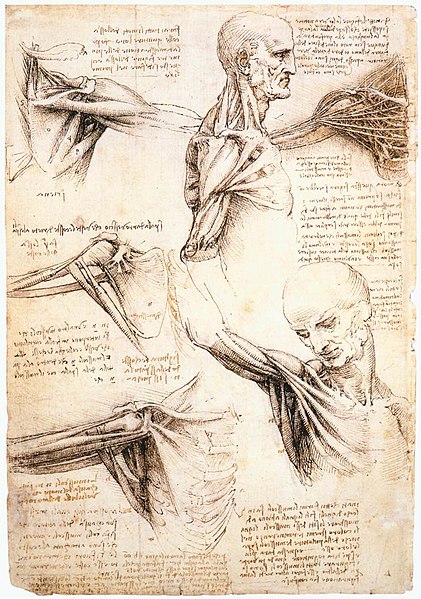
Da Vinci's Anatomical Studies of the Shoulder.
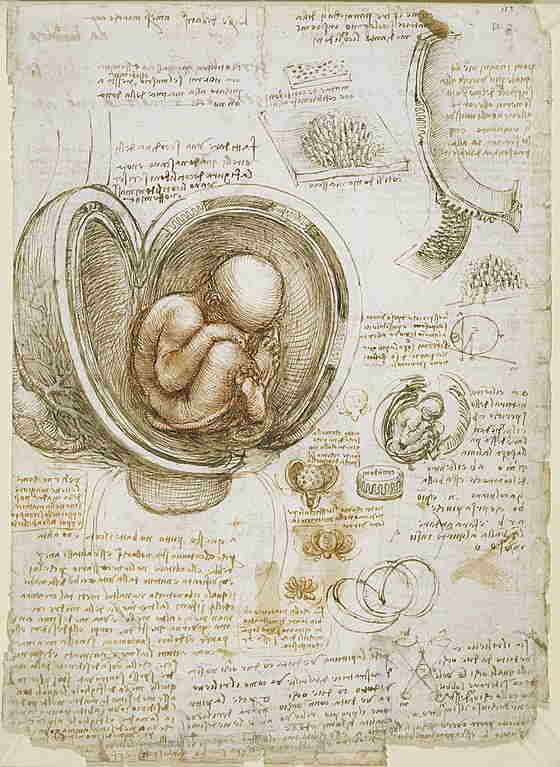
Studies of the Fetus in the Womb.
Da Vinci’s ability to think as an engineer as well as an artist meant he uncovered truths about the human body that would have been revolutionary to the fields of anatomy and physiology at the time. For example, during the Renaissance, the common belief was that the heart was a two chambered system, made up of the two ventricles. The atria or filling chambers were considered part of the venous system. Da Vinci clearly states in his papers that the heart consists of 4 chambers, separated by valves. Furthermore, he correctly posited the mechanism behind the opening and closing of the aortic valve - a discovery that would not observed or even understood again for hundreds of years!
Sadly, Da Vinci never published his studies - leaving them undiscovered among his personal papers until around 1900 - almost 400 years after his death! This meant that the observations and drawings he dedicated over 30 years of his life to, made little if no impact on the history of science. Regardless of this, his works are still highly regarded due to their accuracy and beauty, as well as their insights that were well ahead of their time.
To mark the 500th anniversary of his death on May the 2nd (2019), the Royal Collection Trust has opened 12 simultaneous exhibitions - entitled Leonardo da Vinci: A life in drawing, across the UK in museums and galleries in 12 different cities. As the largest display of Leonardo’s work in over 65 years, each exhibition will display 12 original drawings of Da Vinci, selected to reflect his wide range of interests.
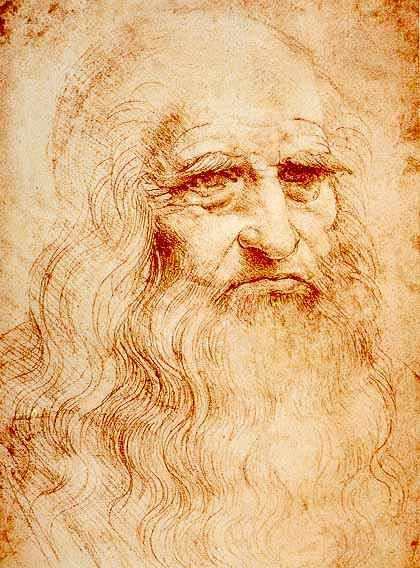
Lt Anatomy Collection Release!
The 500th year remembrance of Leonardo da Vinci coincides with the release of our Human Anatomy Collection within our online education platform Lt! Designed by our team of Instructional Designers in collaboration with ToLTech, the Human Anatomy Collection explores twelve body systems with practical, hands-on labs and lessons covering dissection, histology, and model activities, as well as additional background information and tutorials.
A sneak preview of the collection can be seen at the Human Anatomy and Physiology Society (HAPS) Conference this year, May 23rd-24th in Portland. So make sure you head down to the ADInstruments booth to take a look! Stay tuned for the release of the full suite of twelve body systems in Summer 2019!
Anatomia Italiana: where anatomy and art intersect
Resources for Educators: The HAPS Anatomy Learning Outcomes!
Join the Lt Online Community to connect and collaborate with educators around the globe!
Free Images: 10 free high-quality anatomy images for educators to download and use!

